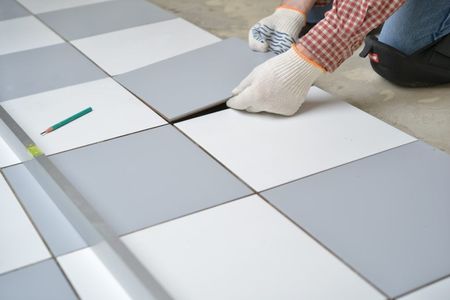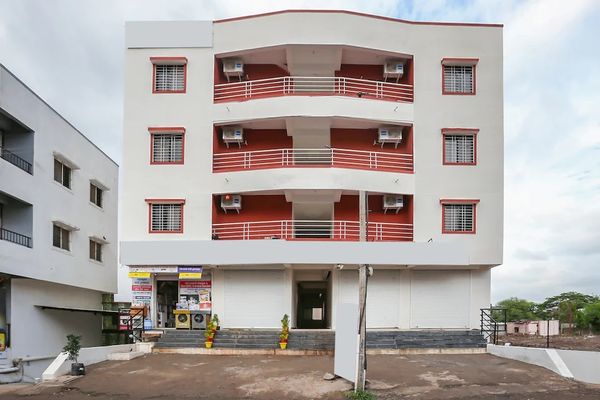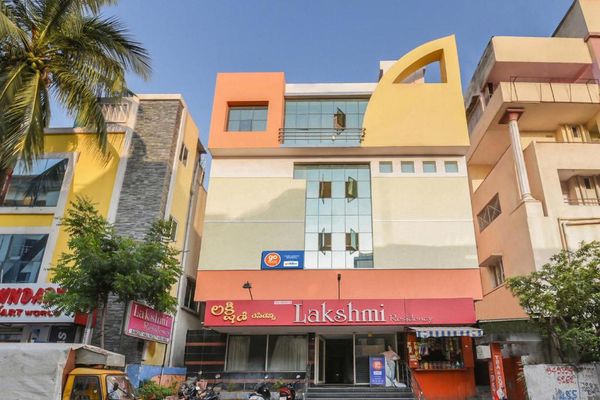Advancing Tile Installation: Innovative Tools and Materials
 Master Copy
09 Jan, 2025
12 mins read
143
Master Copy
09 Jan, 2025
12 mins read
143

Tile installation has come a long way from the days of manual labor and limited material options. Technological advancements and innovative design are shaping the future of this craft, introducing tools and materials that make installations faster, more precise, and more durable. For professionals and DIY enthusiasts alike, understanding and adopting these smart innovations can lead to better results and greater efficiency.
In this article, we’ll explore how smart tools and cutting-edge materials are revolutionizing tile installation, what benefits they bring, and what trends to expect in the coming years. Also, before hiring any tile installation firm, make sure to check the portfolio of the company.
Why Smart Tools and Materials Matter in Tile Installation?
The traditional methods of tile installation, while effective, often come with challenges such as uneven surfaces, wasted materials, and time-consuming processes. Smart tools and innovative materials aim to address these issues by making installation easier, reducing waste, and ensuring long-lasting results.
From laser-guided precision to eco-friendly adhesives, these advancements are not just about convenience; they're about raising the standards of craftsmanship, improving sustainability, and enhancing user experience.
Key benefits include:
- Efficiency: Faster installations mean lower labor costs and happier clients.
- Precision: Advanced tools ensure accurate measurements and placements.
- Durability: High-tech materials offer greater resistance to wear and tear.
- Sustainability: Eco-friendly options reduce the environmental impact of projects.
Now, let's take a closer look at the tools and materials that are changing the game.
Smart Tools Transforming Tile Installation
Advancements in technology have introduced a range of smart tools that cater to both professionals and ambitious DIYers. These tools not only simplify complex processes but also ensure flawless results, saving time and money.
1. Laser-Guided Tile Cutters
Traditional tile cutters often require a steady hand and a sharp eye, but even skilled professionals can encounter errors. Enter laser-guided tile cutters. These tools use laser beams to guide you, ensuring precise cuts every time even on intricate designs or diagonals.
Example:
The Sigma KERA-CUT Kit combines a laser guide with ergonomic features to enable smooth cuts on large-format tiles. This tool has become a favorite in the industry for its accuracy and ease of use.
2. Smart Leveling Systems
One of the most common complaints about tile installations is uneven surfaces. Smart leveling systems, such as clip-and-wedge or reusable systems, ensure tiles sit flush with one another, reducing lippage (uneven tile edges) and improving the overall finish.
Why it’s a game-changer:
For larger tiles and formats, these systems are crucial for creating a smooth, polished finish. They're also ideal for heated or textured tiles, where consistent alignment is key.
3. Automatic Grout Applicators
Spreading grout manually can be messy and inconsistent. Automatic grout applicators, like battery-operated caulking guns, allow for more precise application, saving time while minimizing cleanup.
Bonus feature:
Some models even include LED lighting to help you see what you’re doing in low-light conditions.
4. Virtual Measurement Apps
Say goodbye to complicated measurements and templates. Virtual tools, like augmented reality (AR) tile-measuring apps, allow professionals to visualize layouts, calculate square footage, and anticipate cuts before even opening a box of tiles.
Example:
Apps such as ARuler or MeasureSquare Flooring are designed to help you plan your installation from start to finish, avoiding errors and wasted materials.
5. Dustless Cutting Equipment
Tile cutting can create dust, which isn't just messy but can also pose health risks. New dustless cutting systems use vacuum attachment features or wet-cutting methods to keep workspaces clean and safe.
These tools are particularly important for indoor projects where dust control is essential.
Innovative Materials Revolutionizing Tile Installation
Smart materials are just as critical to the future of tile installation as high-tech tools. These new materials are redefining what's possible in terms of design, functionality, and sustainability.
1. Self-Healing Grout
Grout is often the weak link in tile installation, prone to cracking and staining over time. Enter self-healing grout a material designed to fill cracks automatically when exposed to water or other triggers.
How it works:
The grout contains microcapsules filled with a healing agent. When a crack forms, the capsules burst, sealing the crack and restoring the grout’s integrity.
2. Lightweight Tiles
Traditional tiles can be heavy and difficult to manage, especially in large-format applications. Lightweight tiles made from composite materials allow for easier handling and reduced installation time without compromising strength or durability.
Example:
Porcelain panels like Laminam are ultra-thin yet surprisingly strong. They’re ideal for wall installations and remodeling projects where weight reduction is crucial.
3. Eco-Friendly Adhesives
Traditional tile adhesives often contain chemicals that are harmful to the environment. Modern eco-friendly adhesives are made from sustainable materials and offer low-VOC (volatile organic compound) formulations, ensuring safer installations.
Why it matters:
With increased demand for green building certifications like LEED, using sustainable adhesives can set your business apart.
4. Heat-Resistant and Anti-Microbial Tiles
Specialized tiles designed to withstand extreme temperatures or inhibit bacterial growth are becoming popular in kitchens, bathrooms, and commercial spaces.
Applications:
- Heat-resistant tiles are perfect for fireplaces or outdoor kitchens.
- Antimicrobial tiles, often treated with silver ion coatings, are ideal for hospitals and other hygiene-critical environments.
5. Smart Tiles
Yes, tiles are getting smart, too! Some tiles now feature integrated technology, such as LED lighting or temperature control. Smart tiles are perfect for creating dynamic, interactive spaces.
Trending Example:
Glow-in-the-dark tiles like those by Ceramiche Refin are not just functional but also stylish, adding a new layer of creativity to installations.
Future Trends in Tile Installation
Looking forward, the tile industry shows no signs of slowing down in its push for innovation. Here are some trends to keep an eye on:
Robotic Installation Systems:
Robots capable of laying tiles autonomously are already in development. These systems promise to speed up large-scale projects while maintaining precision.
3D-Printed Tiles:
The rise of 3D printing technology is making it easier to produce customizable tile designs on demand.
With these advancements, the line between technology and craftsmanship is blurring, giving rise to unprecedented possibilities in tile installation.
Written By:
Master Copy



Hotels at your convenience
Now choose your stay according to your preference. From finding a place for your dream destination or a mere weekend getaway to business accommodations or brief stay, we have got you covered. Explore hotels as per your mood.


